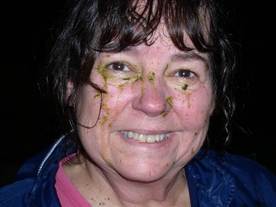This month's featured farm member is:
Alpacas by Armstrong /
Evergreen Fleece Processing
_
21516 80th Avenue SE, Woodinville WA 98072
[email protected]
Alpacas by Armstrong
Evergreen Fleece Processing
(360) 668-0676
21516 80th Avenue SE, Woodinville WA 98072
[email protected]
Alpacas by Armstrong
Evergreen Fleece Processing
(360) 668-0676
Our alpaca journey began in 2004 with 4 fiber boys so we
could see “if we can do this”.
A year later we purchased 2 pregnant females and now have a herd of over 40 animals, most with great pedigrees, many super fleeces, and several ribbons. Breeders or not, all but one have great fleece for processing into something. Many are black or dark. MANY FOR SALE! (if you are clever) you might even negotiate a processing benefit. We love the animals and the alpaca community.
A year later we purchased 2 pregnant females and now have a herd of over 40 animals, most with great pedigrees, many super fleeces, and several ribbons. Breeders or not, all but one have great fleece for processing into something. Many are black or dark. MANY FOR SALE! (if you are clever) you might even negotiate a processing benefit. We love the animals and the alpaca community.
Being on a small property we have focused on chore efficiency, ease of care for our animals, but always thinking about getting the most from our fiber “product”.
Even with the first animals we asked ourselves “now what?” We have the alpacas, now what? We sheared them, now what? We have yarn and “Texas Rugs”, now what?
We’ve always had a focus on fiber. We developed regimens to protect and get the most fiber yield from our herd. This ranged from providing covered shelter for show season, to regular pasture and barn/stall maintenance, and shearing process to protect the ultimate product, the fiber. Keeping yearly herd fiber stats we noticed that the blanket (bag 1) is about 1/3 of the fiber but what can we do with the other 2/3’s of the fiber. It’s pretty good fiber. There must be something we can use it for besides garden mulch. After all, a pound of bag 1 (blanket) costs us the same to produce as a pound of bag 2 or 3.
Speaking of garden mulch, one of Lynne’s goals is to make alpaca poop a gardener’s necessity. Fleece isn’t their only magnificent crop. The March issue of Alpaca Culture has a great article on alpaca poop.
This desire to have all of our fiber working for us fostered a “no fiber left behind” attitude. Add in some life changing events and a year or so of intense due diligence and Evergreen Fleece Processing, LLC was created in 2011.
Nearly all of the fiber has a purpose. Very useful (and consumer desired) products are made from 1st’s, 2nd’s and even 3rd’s! (bags 1, 2, 3) Yes Thirds!
Remember that a pound of bag 1 (blanket) costs the same to produce as a pound of bag 2 or 3.
Fleece can be combined with other natural fibers to enhance qualities for its intended end use. Maybe it is adding some wool or bamboo. Maybe it’s adding some accent features like special colors, sparkle or twinkle to the end product. Most of this can be done relatively easily in the preparatory processing phase.
We at Evergreen Fleece Processing provide services to help your fleece meet its potential.
We now process huacaya and suri alpaca, llama, various sheep wools and pygora.
Remember that a pound of bag 1 (blanket) costs the same to produce as a pound of bag 2 or 3.
Fleece can be combined with other natural fibers to enhance qualities for its intended end use. Maybe it is adding some wool or bamboo. Maybe it’s adding some accent features like special colors, sparkle or twinkle to the end product. Most of this can be done relatively easily in the preparatory processing phase.
We at Evergreen Fleece Processing provide services to help your fleece meet its potential.
We now process huacaya and suri alpaca, llama, various sheep wools and pygora.
See the potential… call or come by for a visit, or see us at a show.
Save shipping or gas.
We will accept fleece at any show, meeting, or event we attend. Just try and let us know in advance so we have enough room.
|
Shearing tip
(as 'tis the season): |
It is much easier for you to clean the fleece while it is still on the animal. We use a shop-vac just before shearing. Others use a leaf blower. Either way gets as much veggie and other foreign matter out of the fleece while on the animal. This will save time on the skirting table. Of course, don’t shop-vac fleeces intended to be shown. |
The Featured Farm Page is a benefit offered to NSAA Farm Members on a monthly basis. To learn more about how to have your farm featured here, read our Featured Farm Guidelines.





